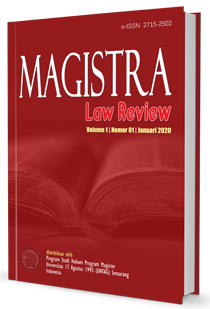Penerapan Rekam Medis Elektronik di Rumah Sakit di Indonesia: Kajian Yuridis
Abstract
Electronic Medical Record (RME) is a system that contains medical and disease history, diagnostic test results, information on medical expenses and other medical data. On September 12 2022, the Ministry of Health (Kemenkes) of the Republic of Indonesia issued the RME regulations contained in the Regulation of the Minister of Health or abbreviated as Permenkes No. 24 of 2022 concerning Medical Records. However, not all Health Service Facilities in Indonesia have implemented the practice of Electronic Medical Records. The Normative Juridical Method was used in this study, in which the main source of law used was Permenkes No. 24 of 2022 concerning Medical Records, Law no. 47 of 2021 concerning Hospitals and Law no. 29 of 2004 concerning Medical Practice. RME’s broad capabilities had led to its recognition as an important tool for improving patient safety and quality of care, particularly by promoting evidence-based medicine. Hospitals were also required to provide non-medical personnel in the field of information systems to support the implementation of electronic medical records in hospitals. On the other hand, the government needed to provide training so that officers and doctors in hospitals could implement RME according to the provisions of the applicable Health Regulations.
Keywords
Full Text:
PDF (Bahasa Indonesia)References
Amiruddin, & Asikin. (2012). Pengantar Metode Penelitian Hukum. (Jakarta: Raja Grafindo Persada,)
CNN. (2020, 8 22). Kunjungan Aplikasi Telemedis Melonjak 600 Persen Saat Covid. Retrieved November 23, 2022, from Menkominfo Harap Layanan Telemedisin Tembus Ke Wilayah 3T Di Indonesiahttps://Www.Cnnindonesia.Com/Teknologi/20200822125041-52-538097/Kunjungan-Aplikasi-Telemedis-Melonjak-600-Persen-Saat-Covid [accessed 23 November 2022]
Davidson, E., & Heslinga, D. (2006). Bridging the IT Adoption Gap for Small Physician Practices: An Action Research Study on Electronic Health Records. Information Systems Management, 24(1), 15-28
Fritz, F., Tilahun, B., & Dugas, M. (2015). Success Criteria for Electronic Medical Record Implementations in Low-Resource Settings: A Systematic Low-Resource Settings: A Systematic Review. Article Amia Medical Information, 2015
Hatton, J., Schimdt, T., & Jelen, J. (2012). Adoption of Electronic Health Care Records: Physician Heuristics and Hesitancy. Procedia Technol, 5, 706-715
Jones, S., Heaton, P., Rudin, R., & Schneider, E. (2012). Unraveling the IT Productivity Paradox—Lessons for Health Care. New England Journal of Medicine, 366(24), 2243-2245
Ludwick, D., & Doucette, J. (2009). Adopting Electronic Medical Records in Primary Care: Lessons Learned from Health Information Systems Implementation Experience in Seven Countries. International Journal of Medical Informatics, 78(1), 22-31
Menkominfo. (2020, Agustus 4). Retrieved November 23, 2022, from Menkominfo Harap Layanan Telemedisin Tembus Ke Wilayah 3T Di Indonesia: Kominfo.Go.Id/Content/Detail/28858/Menkominfo-Harap-Layanan-Telemedisin-Tembus-Ke-Wilayah-3t-Di-Indonesia/0/Sorotan_media [accessed 23 November 2022]
Miller, R., & Sim, I. (2004). Physicians’ Use of Electronic Medical Records: Barriers and Solutions. Health Affairs, 23(2), 116-126
Sari, I. D,. (2006). Manajemen Rekam Medis. Yogyakarta
Yamamoto, L., & Khan, A. (2006). Challenges of Electronic Medical Record Implementation in the Emergency Department. Pediatric Emergency Care, 22(3), 184-191
DOI: http://dx.doi.org/10.56444/malrev.v4i02.4167
Refbacks
- There are currently no refbacks.
Publishing Office :
Indexed in :










